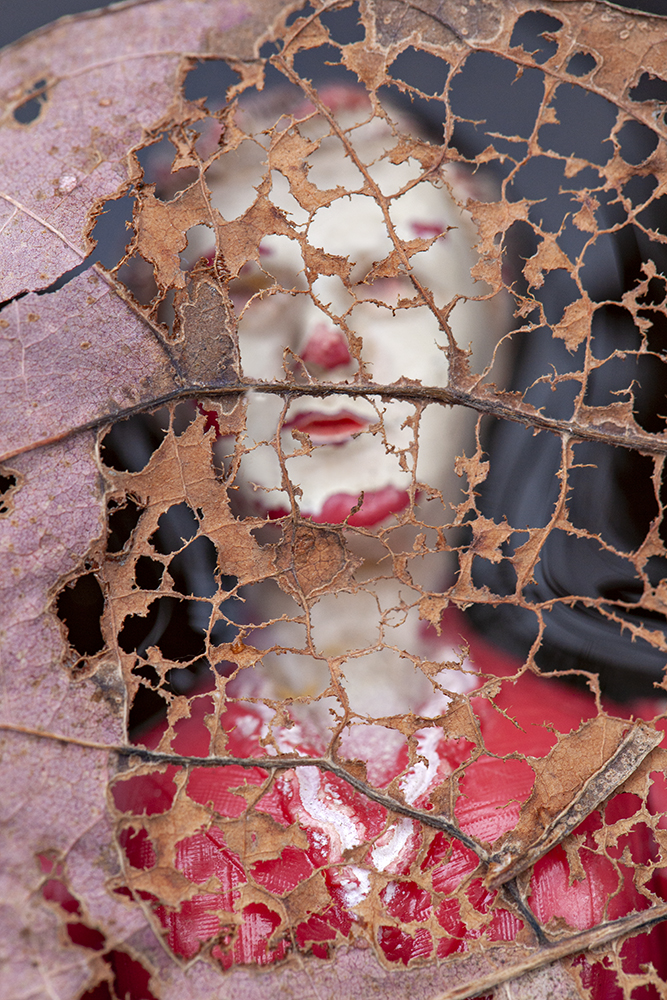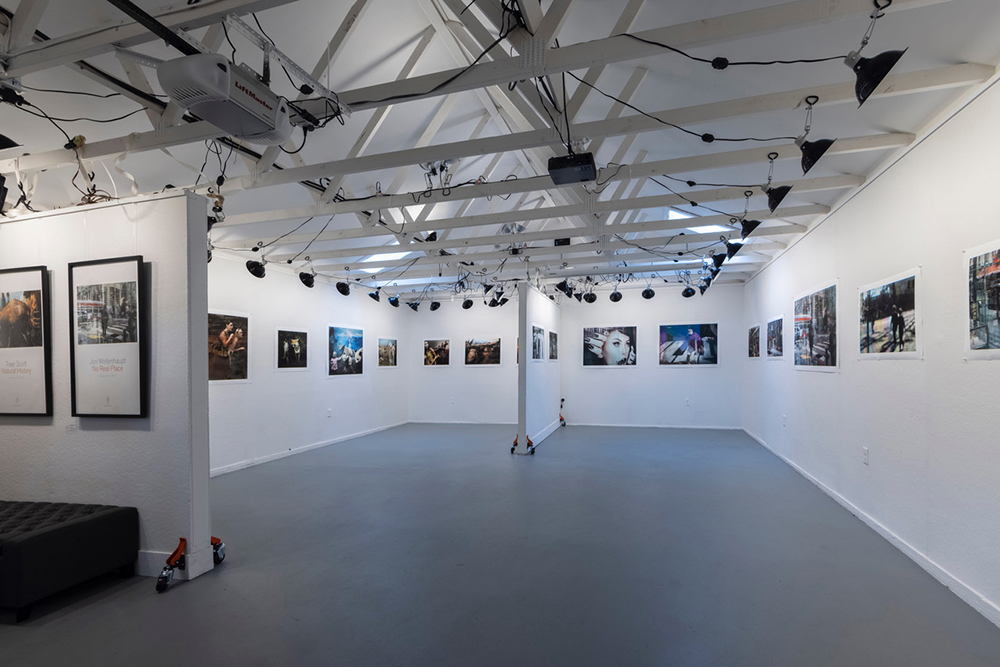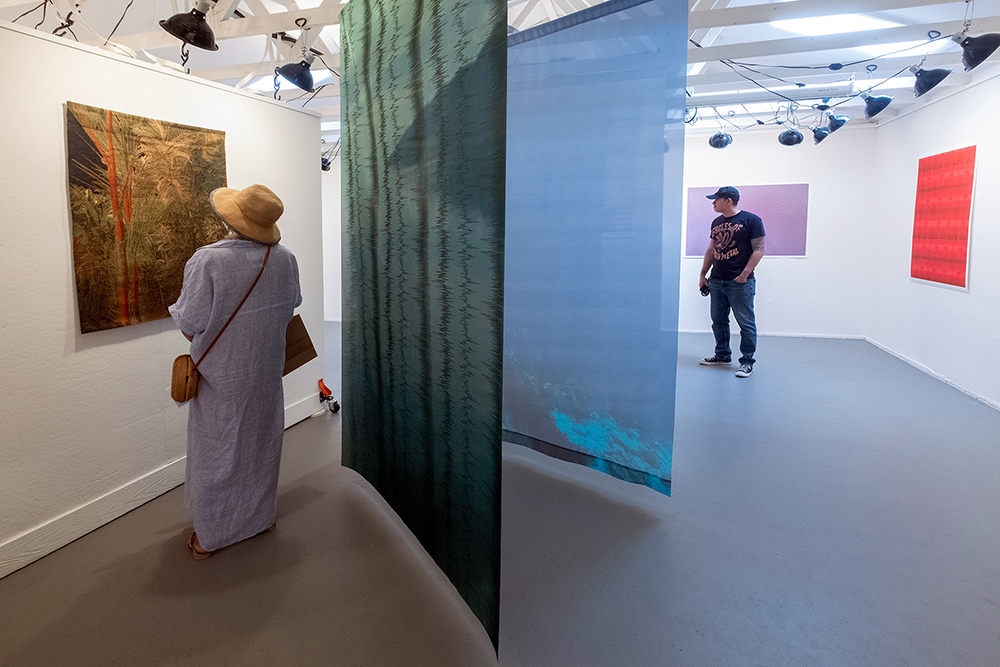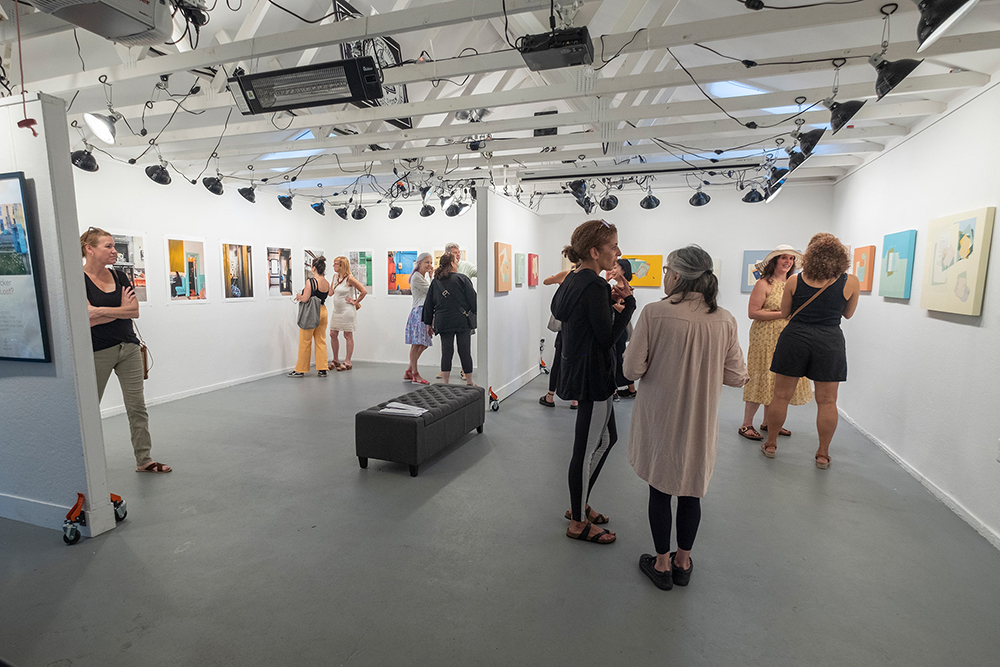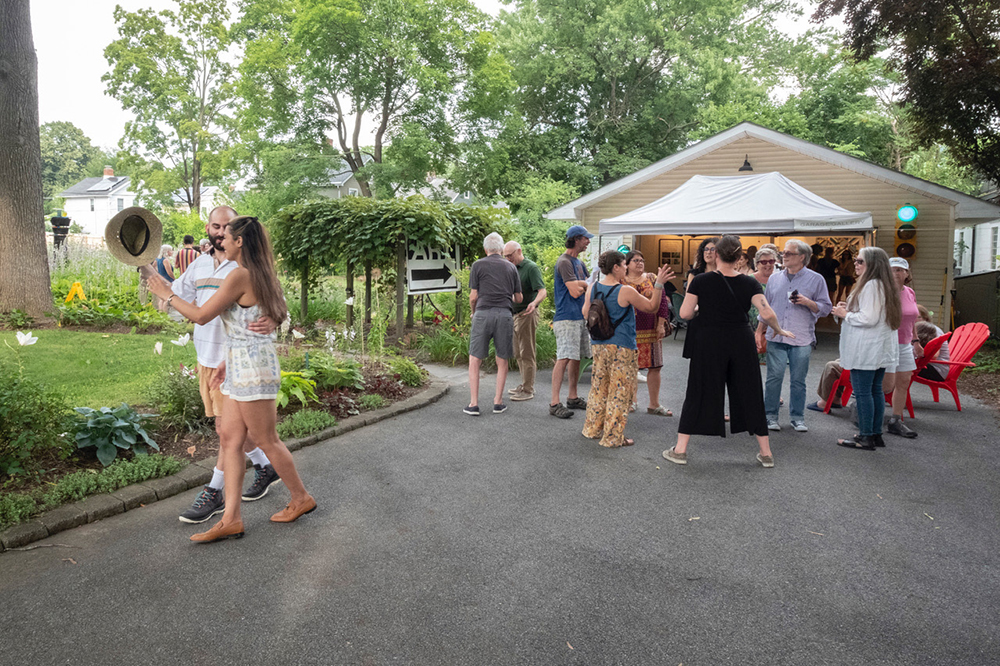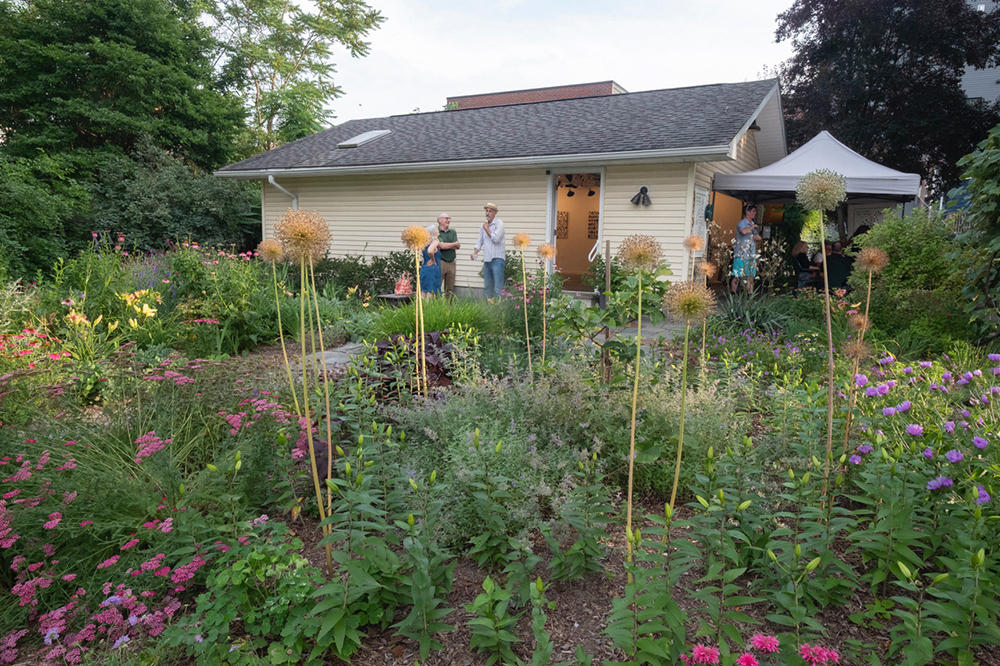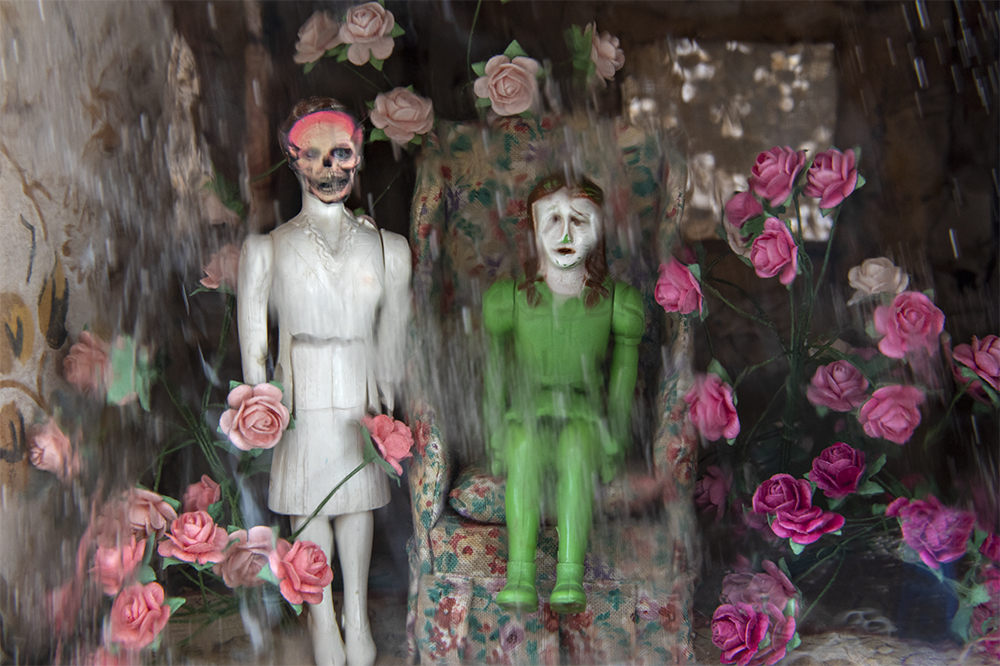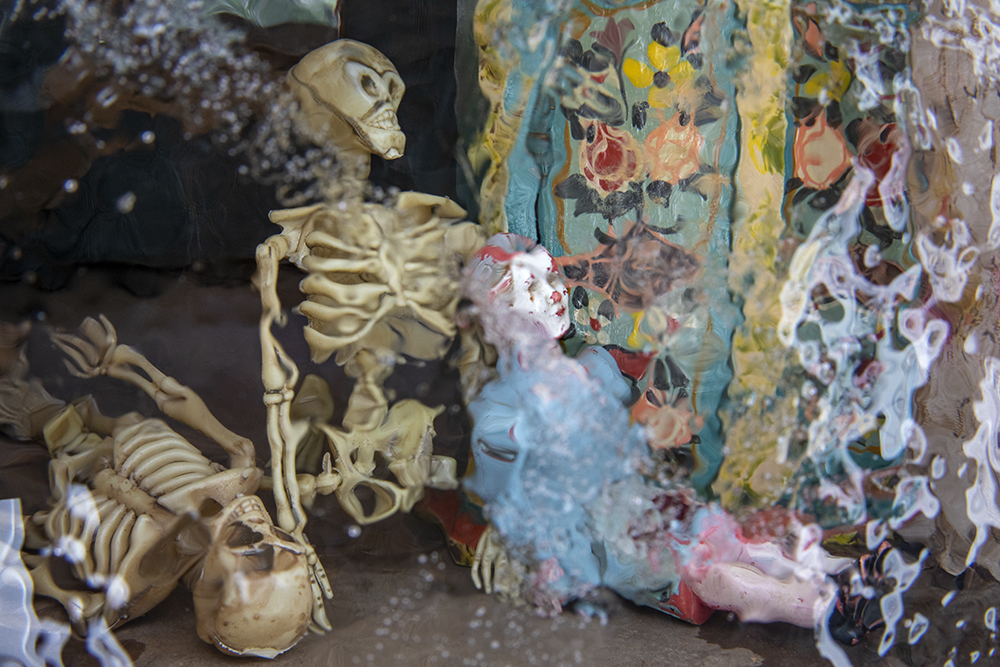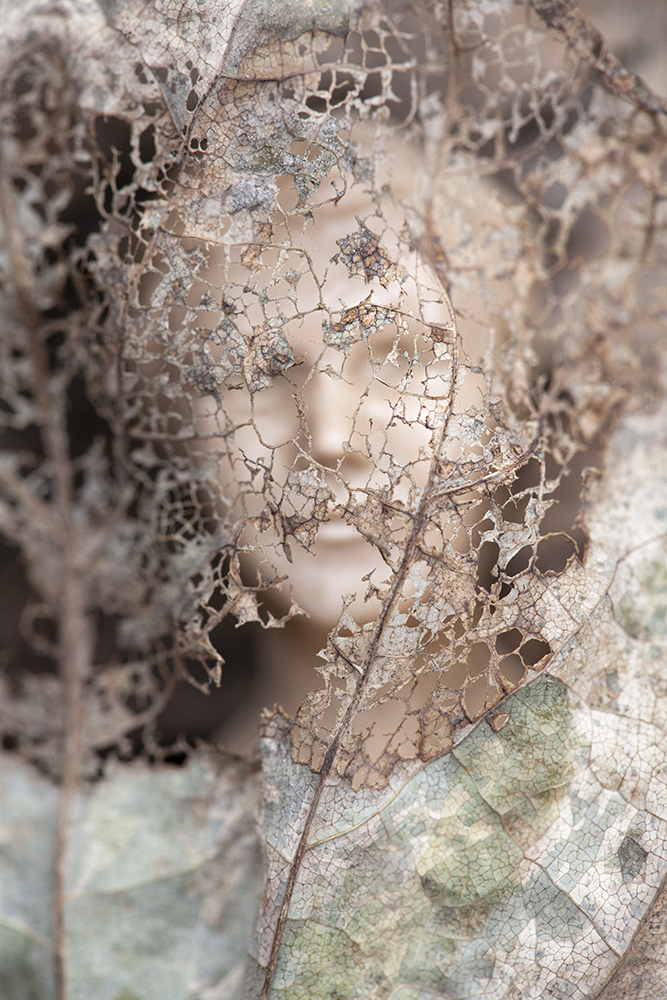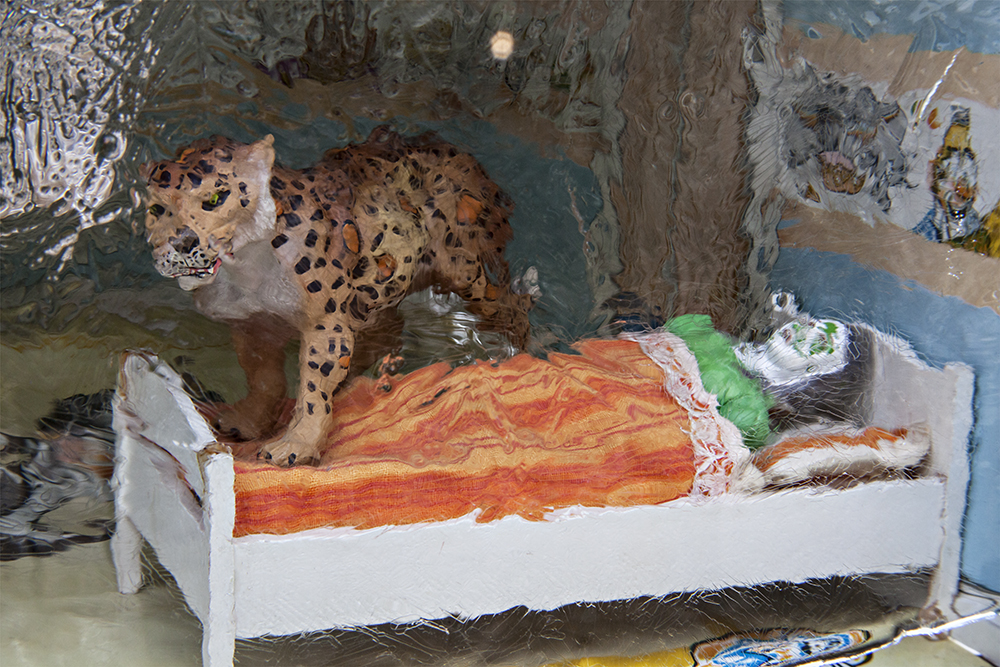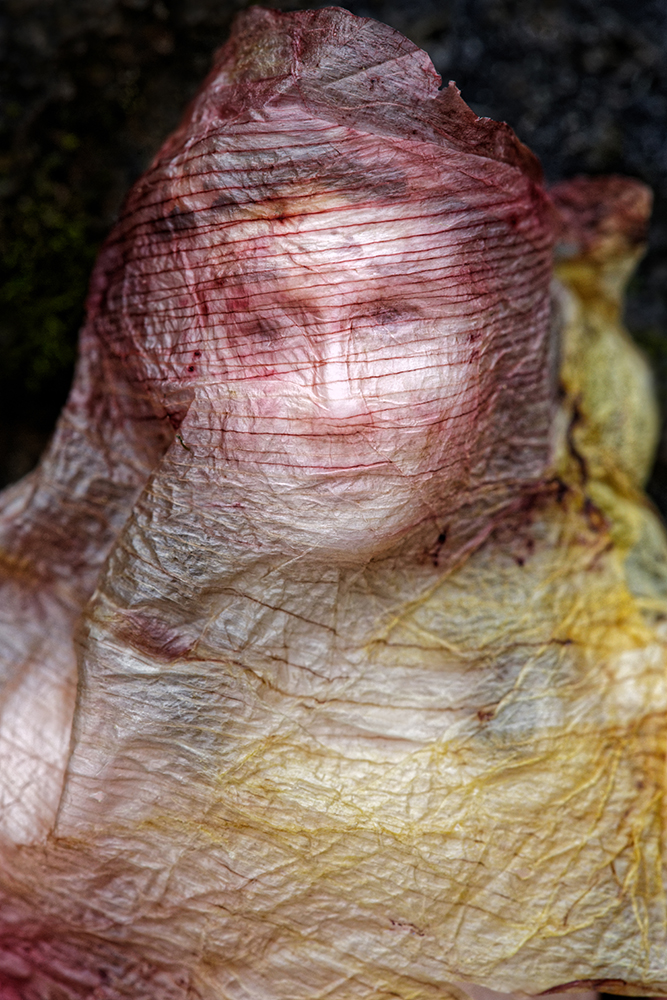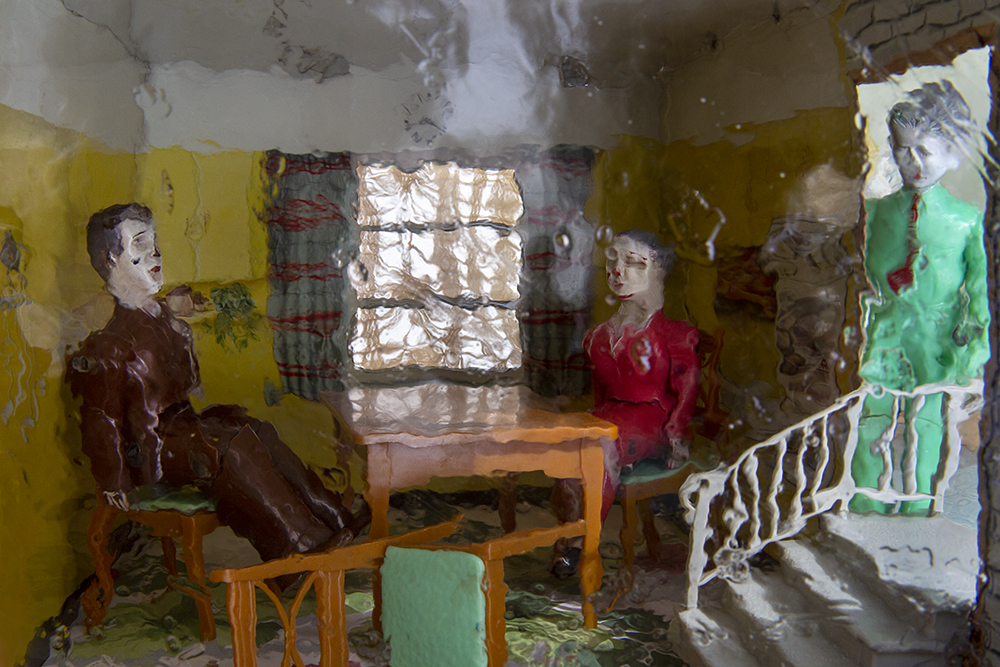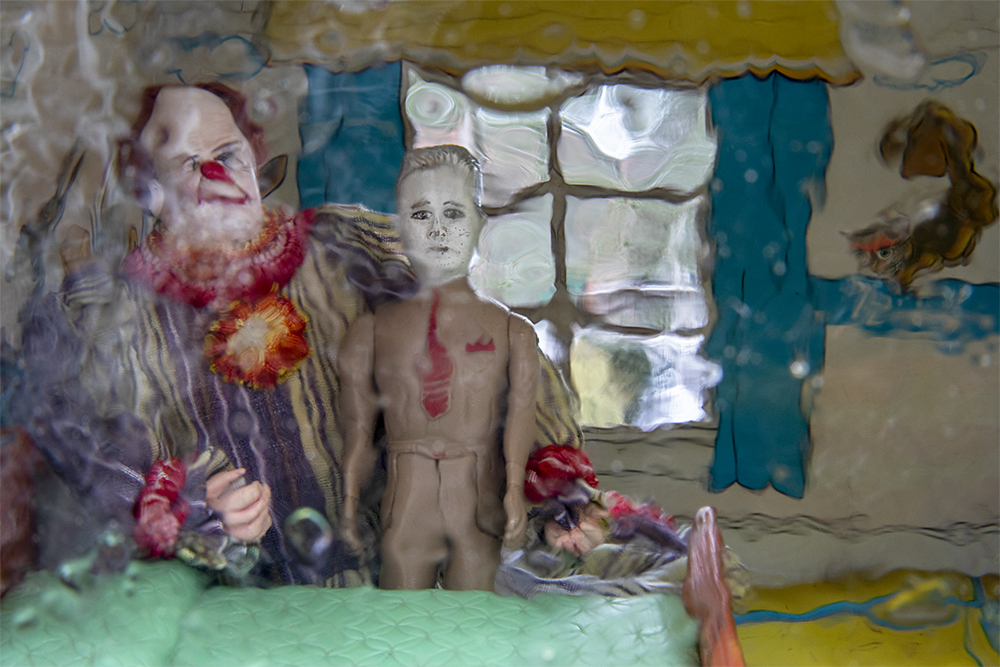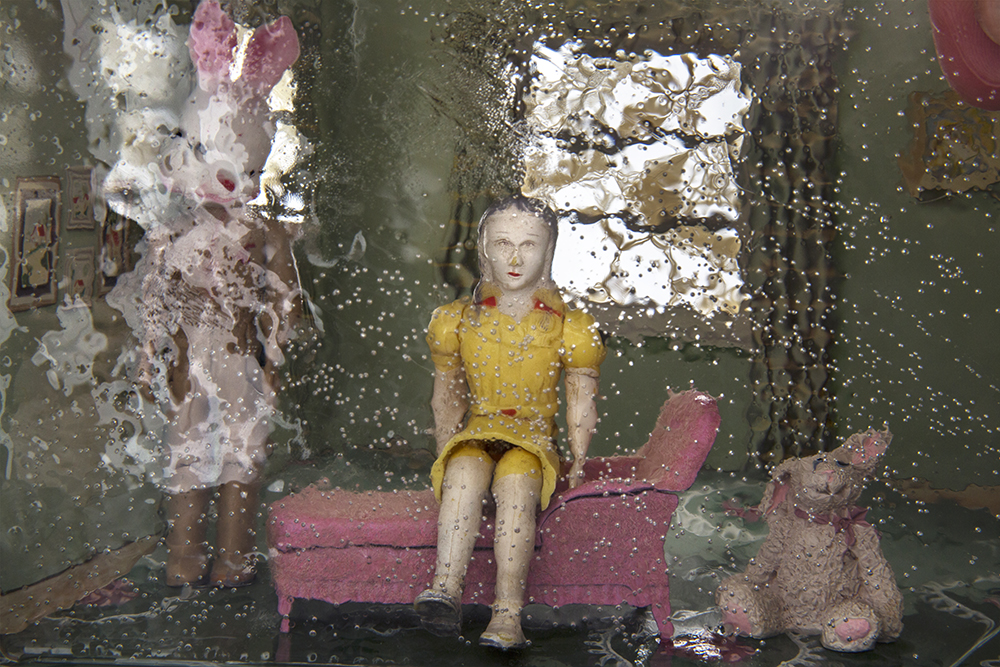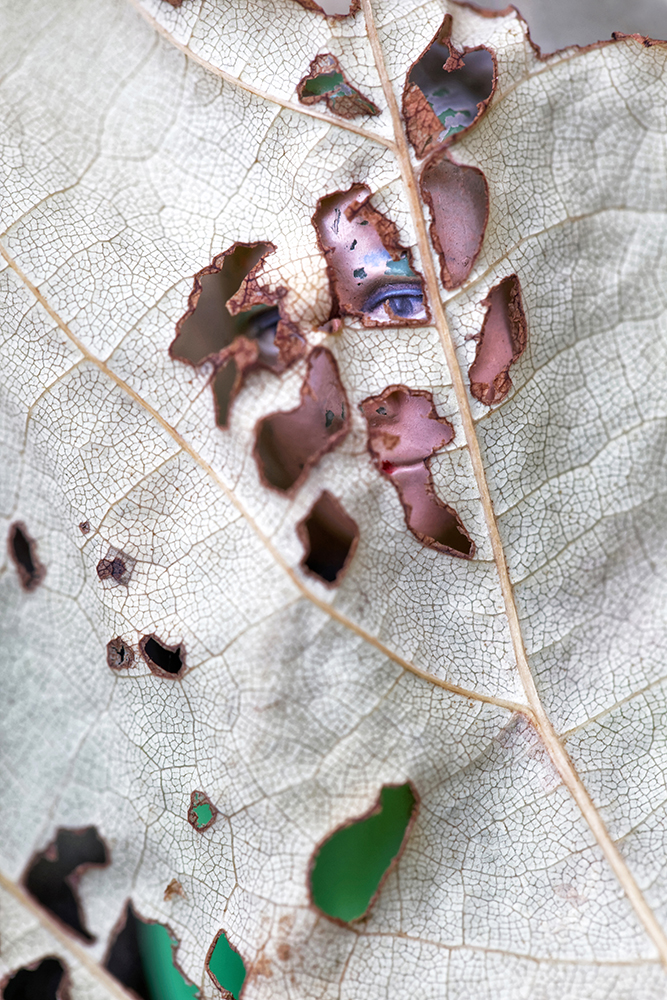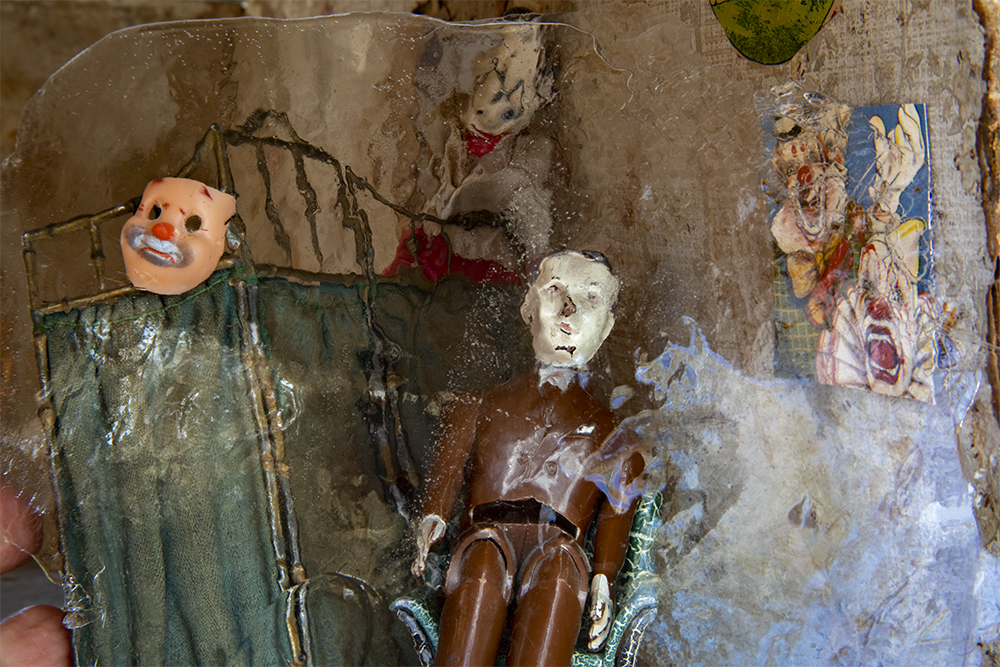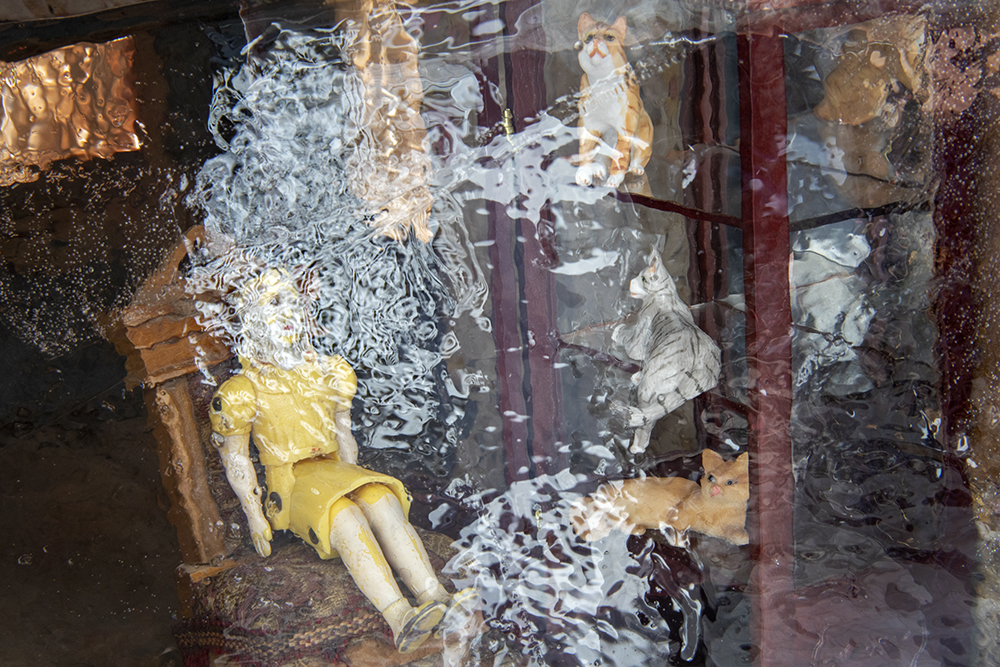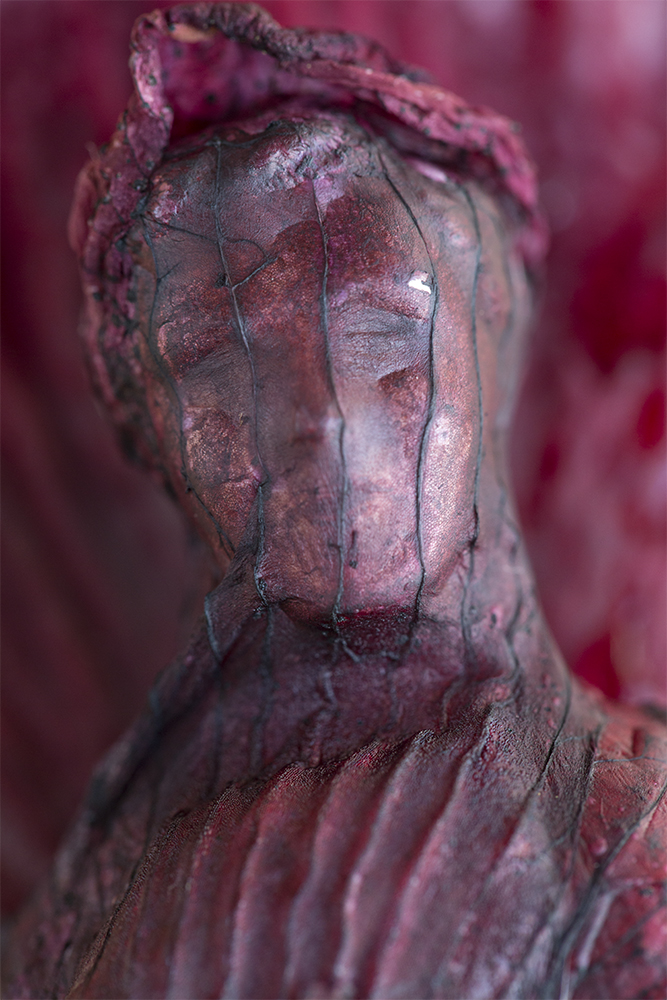Susan Keiser: Undertow
It was a pleasure to meet with a long time friend, Susan Keiser, at the New England Portfolio Reviews. Not only was it wonderful to spend time with her projects, but to also learn about her endeavor, The Garage Gallery . In the current climate in photography, the self-determined path might be the best one.
She is the co-founder and co-curator with Scott Lerman of Garage Gallery in Beacon, New York, which presents significant exhibitions by emerging and mid-career artists. The gallery’s paired solo shows open dialogs between artists working in wide range of media. One-person shows allow visitors to experience the breadth of a singular vision. The gallery is open April through October and will be on hiatus over the winter while the curators set the 2024 schedule. Interested photographers should consult the Garage Gallery website for instructions.
An interview with the artist follows.
Susan Keiser is a fine art photographer working at the intersection of dreams and memories, abstract and conceptual ideas. Her ongoing project reflects her life-long concern with building large structures out of small units, entire worlds out of miniature elements. The recipient of numerous awards, including a National Endowment for the Arts grant, her photographs have been exhibited in solo and group shows in a wide range of museums, galleries, and art fairs both here and abroad, including the Griffin Museum of Photography, Winchester, MA; Berlin Foto Biennale; Candela Books + Gallery, Richmond, VA; Anchorlight Gallery, Raleigh, NC; Keyhole Art Fair, Murcia, Spain; PH21 gallery, Budapest; Barrett Art Center, Poughkeepsie, NY; Texas Photographic Society, Houston; the Center for Photographic Art, New York; The Big Picture, Denver; and the Los Angeles Center of Photography. She holds a BFA from The Cooper Union and a diploma from The New York Botanical Garden School of Professional Horticulture.
Images from “Barbaric Glass” are on view through December 9 in the Now: As a Consequence of Fact exhibition, Pen + Brush, New York, New York.
Instagram: @susankeiser
Undertow
Drawing on my experience as a painter, printmaker, and conceptual artist, I use photography to describe my world, not the day-to-day of it, but the sun-born visions and night-bound terrors that can’t be seen or understood until pictured. Memories and dreams, revelations and reflections only come into focus when manifested in tangible images.
I work with a family of dolls mass-produced the 1950s—the embodiment of an idealized middle-class culture, now relegated to tag sales and eBay. Once models of conformity, years of handling have worn away their veneer of polite reserve and privilege, revealing emotional truths hidden just below the surface. While only four inches tall, they have power beyond their size.
Dolls have always served as powerful links between spirit and body, imagination, and reality. And until very recently, few cultures distinguished between those created for rituals and those given for play. From fertility goddess to religious effigy, from voodoo curse to child’s toy, we use them to understand and shape our lives, and my complex images address both individual and cultural histories.
Undertow is my on-going, interlocking series of portfolios. Working outdoors, following the seasons, water animates my work as it animates all life. Whether liquid or frozen, in droplets or ponds, it serves as both metaphor and lens. Worn remnants of plastic are transformed when fractured through panes of ice, reflected in liquid windows, or swathed in sodden paper or petals. Intuitive, improvised, my photographs are created entirely in-camera and in available light.
The images from my “Barbaric Glass” portfolio are photographed through sheets of ice. Just as glass is created by intense heat, ice is formed by intense cold. Both are fragile, reflective, and transparent. And both can create life-framing windows and mirrors, lenses that fill photographic frames with narrative possibilities.
“The Last Wave By” images portray souls veiled in doubt. We live in a perpetual state of mediation between affirming or denying our most basic desires. We wake to the tension between wanting to embrace life or just disappear, to rise up to meet the day or sink down to rest forever. From birth cauls to death shrouds we are caught between worlds, sometimes only momentarily, sometimes more permanently. Some emerge from this transitional space, others do not.
Can you share the landscape of your childhood and early influences?
I grew up in the suburban town of Larchmont, New York, renowned as the idealized setting for the comedy, Please Don’t Eat the Daisies—the book, TV series, and Doris Day movie. A couple packs up their four boys and moves from a chic Manhattan apartment to find a better life. They acquire a quirky pile of a house, an Old English sheepdog, and a wise-cracking maid. Heart-warming hilarity ensues. Joan Rivers, who also grew up there, secured the town’s role as a target for both envy and abuse when she became a star performing her “Last Girl in Larchmont” routine on Johnnie Carson.
From the late 50s through the 60s, Larchmont was both extolled and mocked in popular culture as the perfect, safe place to live one’s best life—not at all what I experienced as a child dealing with my disaster of a family and a growing identification with the civil rights and anti-war movements that were tearing the country apart.
Fortunately, there was an escape. Our family lived within walking distance of the commuter trains that connected Larchmont to the city. In a world on fire, continuing to participate in the sham of the good life had become impossible, so I mostly skipped school and got on the train. (Of course, privilege comes before irony in a place like Larchmont, and I was allowed to finish high school by taking courses at Columbia University and the New School.) Before social media, those trains were a lifeline to the larger world, offering an escape from the bucolic façade of my hometown. It was peaceful looking out the window at the moving landscape, watching as wooded hills gradually faded into the extraordinary urban chaos of Mayor Lindsey’s New York City.
I explored the city, untethered to my everyday life, yet feeling surprisingly safe and grounded. Beyond the obvious excitement of experiencing “The City,” this kind of critical distancing has been important not only in my careers in publishing and public horticulture but most importantly, in making art. When I applied to college my first criteria was to get as far away from home as possible, and I ended up at Pomona, in southern California. But two years without winter was enough, and I began my circuitous journey back to New York.
What brought you to photography?
While I didn’t take art classes in high school, my eighth-grade English teacher turned her class into a multimedia studies program, showing us avant garde movies and encouraging us to use cameras in our assignments. I got my first SLR as a birthday present that year, a classic Pentax Spotmatic. I often took it into the city with me and even took a course B&W darkroom printing.
When I met Scott Lerman (my husband and partner in Garage Gallery) at Cooper Union, he was working as a B&W printer for one of the best custom darkrooms in the city. Although we were serious about photography and set up a darkroom in our apartment, we both considered ourselves painters. I was a colorist and experimented with color photography but developing and printing color was too difficult and expensive to do at home. So, while I continued to make pictures on and off through the years, photography only became my primary medium when digital SLRs and inkjet printers made it practical for me to use color and have complete control of the process.
Before we dive into your art practice, tell us about the idea of creating your own gallery/exhibition space?
I think most of us are concerned, if not alarmed, at the loss of exhibition spaces. Online venues are important outlets, offering opportunities to an incredibly large number and broad range of artists, but looking at images on a screen, often as small as an iPhone, is no substitute for experiencing real objects in a physical space. And it’s not just the venues that we’ve lost, but also the chance to prepare and show a body of work, not just a piece or two in a group show. We see solo shows becoming rarer as exhibition spaces become more like art fairs, with salon-style group shows becoming increasingly common. We founded Garage Gallery to help fill the void.
Has this new venture shifted anything in your art making, perhaps in ideas about installation?
Size does matter. One of the first decisions a painter makes is the size of the finished work. For photographers, that decision usually comes at the end. Too often the choice is to make it small, driven by the cost of framing and shipping large work, the need or desire to fit more work on the wall, and even expectations resulting from a long history of mostly seeing photographs in mass media. Because it can be, it often is downsized.
While Scott and I had curated exhibits before, having our own venue gives us permission to reconsider what’s possible both for ourselves and our artists. Having the flexibility to exhibit unframed work and access to large printers brings the choice of size back to what is optimum for the work and appropriate for the venue. And best of all, it opens the possibility for reimagining entirely how work might be shown and experienced.
How does an artist get their work in front of you?
It’s simple. Interested artists should check out our previous exhibitions—all archived on www.garagegallery.com. If they think their work is a potential fit for Garage Gallery, they can send us a link to their website. We are looking for substantial, well-developed bodies of work by artists with some previous exhibition history. If practical, artists should come by the gallery and get to know us and the artists we show. We also love the opportunity to sit and talk about art.
Now to your work! When did you begin to make work using toys, dollhouses, and dolls?
I’m a life-long insomniac. One night around the holidays, I was wandering through the house, alone in the dark, when shadows and half-dreams began to animate the glass ornaments hanging from our tree. While I tried to capture those phantoms with an early digital camera, there was no magic in those harshly lit images of Santas and snowmen. But I was intrigued by idea of capturing visions informed by memory, of giving life to inanimate objects, of recording not actual events but emotional truths.
I went searching for subjects on eBay, where I happened on numerous listings for a family of simple plastic dolls from the early fifties. I found the contrast between their prim and proper clothing and their faces and bodies worn by years of handling, poignant, symbolic, and ultimately compelling. Their distress embodied the sad truth of the era in which they were made, when America was “great,” the mythical time to which so many are now clamoring to return. The period dollhouses and other miniatures soon followed, and a whole world began to grow.
I am amazed by how you have continued to expand your storytelling with these objects. Do you think this is a life long focus?
Thank you! As a former painter I think I approach image-making a little differently than many of my colleagues. I’ve never made a living either as a professional photographer or photography teacher so I don’t start from a place of assignments, discrete projects, or deadlines. Rather, I see my work as an ongoing, open-ended dialog, centered on objects emblematic of childhood and family, but reflective of larger, more contemporary concerns. And because I work outdoors, with water, ice, flowers, and other natural elements, it’s closely tied to the rhythm of the seasons and gardening, which has been a life-long pursuit.
There have been many shifts in content and emphasis over the years, fed by both the personal and the cultural. Though rarely acknowledged now, historically dolls have had always had great power, and I’m constantly looking for ways to give that back to them. Each group of new images sharpens the edit while keeping the portfolio fresh and grounded in the moment. For example, clowns were always part of the story as they appear on the bedroom walls of the dollhouses—despite the fact that many children are inherently afraid of them. When Trump happened, they came off the walls and into the rooms like the often dark and disruptive forces they are. But their new prominence was also driven by finding out about my great aunt Ethel, who escaped an abusive situation by literally running away to join the circus. She changed her name to Dixie and became a flyer for Ringling Brothers, married to the troupe’s trombonist, who provided the “smear” that announced the arrival of the clowns.
But beyond the aesthetic and practical considerations (my subjects do whatever I want and don’t complain about the hours or conditions), for me, working with dolls is a perverse act of defiance. An act of resistance to the idea that what girls care about and do is less important than boys. Perhaps because I didn’t play with dolls as a child, the idea of making “big” work, physically and metaphorically, with such small objects, of creating significant work out of materials often dismissed as being just for girls, appeals to my sense of irony.
As times have changed and my work has developed, so has the response I get from viewers. When I started this project I certainly didn’t foresee a future media landscape dominated by toys and childhood. We all live in the Marvel Universe now. And Barbie Land. Perhaps it’s time for this family of dolls to find fandom as well.
What have you learned from your work?
Patience. I start each shoot with an idea and a plan, but things usually devolve rapidly into a series of improvisations. New ideas emerge as I deal with the technical issues of water, ice, and subjects that can’t manage to stay on their feet. My work wouldn’t be possible without a digital camera and the ability to shoot a large number of frames. But the resulting flood of images is daunting, and it’s easy to cherry-pick a handful of good ones from first looks. But I’ve learned that it can take time, even years, to understand which are the “really” good ones as the body of work gets shaped by new additions and current events.
While not all projects can sustain a long-term focus, I think artists are sometimes too quick to move on. Positive attention and a certain level of success are often followed by encouragement to do something new. The ease of presenting work online, from Instagram to virtual exhibitions, has democratized the field, but the need to “feed the beast” can cause some artists to abandon a project before it is really finished. How many really good ideas do most of us have? It’s hard to go bac
What’s next? Do you have any exhibitions coming up?
Last winter I was set to work on a snow-based doll series that I wanted to get into a more complete form. And then we didn’t get any snow. I’m hoping the weather cooperates this year! During the Covid lockdown I started a new series that’s closely related to the ‘Barbaric Glass’ images but without dolls. The first edit got a good response at portfolio reviews last spring and I’m now figuring out how I want to get it out in the world. Stay tuned!
I’m happy to have images from “Barbaric Glass” in the “Now: As a Consequence of Fact” exhibition at Pen + Brush in New York , which is up through December 9.
Posts on Lenscratch may not be reproduced without the permission of the Lenscratch staff and the photographer.
Recommended
-
Salua Ares: Absense as FormNovember 29th, 2025
-
Ricardo Miguel Hernández: When the memory turns to dust and Beyond PainNovember 28th, 2025
-
Pamela Landau Connolly: Columbus DriveNovember 26th, 2025
-
KELIY ANDERSON-STALEY: Wilderness No longer at the Edge of ThingsNovember 19th, 2025
-
Jackie Mulder: Thought TrailsNovember 18th, 2025

